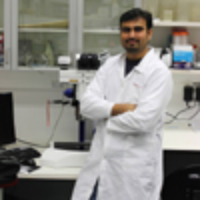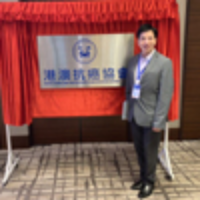Redefining Biotechnology for the Global South: The Role of Synthetic Biology and Computational Tools
Published on: 26th May, 2025
Biotechnology has always played an important role in tackling global concerns, particularly in the Global South, where socioeconomic gaps sometimes stymie scientific progress. Recent advances in synthetic biology and computational technologies have the potential to revolutionize biotechnology in these locations. Synthetic biology allows for the creation and manipulation of biological systems, with promise applications in healthcare, agriculture, and environmental control. Computational methods such as machine learning and artificial intelligence help to optimize synthetic biology processes, enabling innovations that are suited to local requirements. The combination of these cutting-edge technologies with traditional biotechnological techniques has the potential to dramatically improve the Global South's ability to solve issues such as disease outbreaks, food security, and sustainable development. This abstract outline the critical intersections of synthetic biology and computational advancements and their potential to empower the Global South, highlighting the need for supportive policies and capacity-building initiatives to maximize their impact.
Recent Development of Nanofibers in Medical/Pharmaceutical Sectors
Published on: 27th May, 2025
This article provides a comprehensive overview of the properties, applications, and fabrication techniques of nanofibers, which are characterized by their ultrafine diameters and unique features such as high surface area and aspect ratio. These attributes render nanofibers particularly advantageous for a wide range of applications, especially in the biomedical sector, encompassing areas like tissue engineering, drug delivery, and wound dressing. The article highlights various studies that illustrate the potential of nanofibers in addressing healthcare challenges, particularly their utilization in scaffolds for regenerative medicine and as carriers for controlled drug delivery. Furthermore, it discusses different preparation methods for nanofibers, including electrospinning and alternative techniques, while stressing the importance of polymer selection in achieving optimal drug-release properties. The article also delves into the application of nanofibers in tissue engineering, specifically for bone, cartilage, and vascular applications, and examines their emerging roles in organ-on-a-chip technology and contraceptive development. In conclusion, the article emphasizes the versatility and significance of nanofibers in advancing medical technologies and their potential to address contemporary health challenges. Collaborative efforts between material scientists and biologists are essential to foster interdisciplinary research aimed at improving electrospinning methodologies.
Impact of Thin Endometrium in Frozen Embryo Transfer: Thesis Summary Article
Published on: 13th June, 2025
Background: Endometrial Thickness (EMT) is considered an important prognostic factor in assisted reproductive technology (ART), particularly in frozen embryo transfer (FET) cycles. Thin endometrium (< 7 mm) is often associated with implantation failure and reduced pregnancy rates, although its precise impact remains controversial.Objective: This thesis summary evaluates the role of thin endometrium in FET cycles, discusses etiologies, diagnostic modalities, treatment approaches, and reviews available patient data.Methods: We retrospectively analyzed 69 patients who underwent FET at Saveetha Medical College. Endometrial thickness was assessed via transvaginal ultrasound. Various treatment strategies including hormonal therapies (estradiol, progesterone), vasoactive agents, granulocyte colony-stimulating factor (G-CSF), platelet-rich plasma (PRP), L-arginine, sildenafil citrate, vitamin E, pentoxifylline, and stem cell therapy were reviewed for their efficacy in improving endometrial receptivity.Results: Endometrial thickness < 7 mm correlated with lower pregnancy rates compared to patients with thickness ≥ 7 mm. Hormonal and adjuvant therapies reported varying degrees of success in improving EMT and subsequent pregnancy outcomes. Vascularity, angiogenesis, and Doppler studies also demonstrated a significant association with endometrial receptivity.Conclusion: Thin endometrium remains a critical challenge in ART cycles. Multimodal therapeutic approaches may improve outcomes; however, larger prospective studies are required to establish standardized protocols. Our patient data support that even minimal increases in EMT can enhance implantation success.




